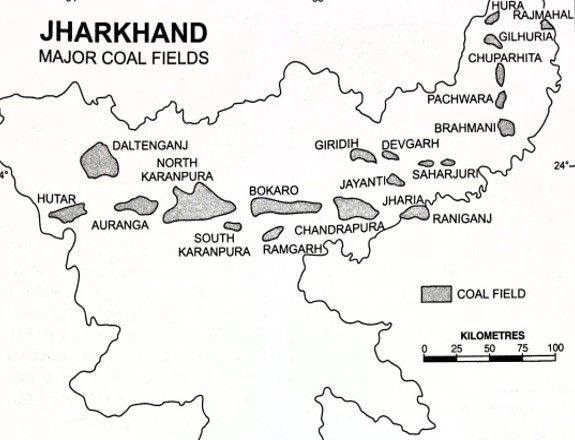South Karanpura Coalfield

- 11 Oct 2024
In News:
Recent research has highlighted significant shale gas generation potential in the eastern region of the South Karanpura coalfield, located in the Ramgarh district of Jharkhand, India. Evidence from microscopic palynomorphs and organic remains, combined with geochemical assessments, indicates that the eastern Sirka coalfield demonstrates a higher potential for hydrocarbon generation compared to the Giddi coalfield to the north.
Overview of the South Karanpura Coalfield
- Location and Size: The South Karanpura coalfield is situated along the Chingara fault and covers approximately 195 square kilometers, housing an estimated 5,757.85 million tonnes of coal reserves.
- Composition: This region is rich in coal, carbonaceous shale, and sandstone layers, making it well-established for its substantial coal deposits.
- Emerging Focus: With increasing energy demands and interest in hydrocarbon exploration, there is a growing emphasis on the potential for coal bed methane and shale gas generation in this area, aligning with national energy strategies for greener energy sources.
Research Methodology
Scientists from the Birbal Sahni Institute of Palaeosciences (BSIP) conducted a comprehensive study to evaluate hydrocarbon generation potential. The research involved:
- Sample Collection: Sediments were collected from coal, carbonaceous shale, and sandstone layers at the Sirka and Giddi C collieries in Hazaribagh district.
- Analysis Techniques: The study utilized palynological analysis of microscopic remains, alongside Rock-Eval pyrolysis to assess the potential of the rock samples. Key parameters analyzed included:
- Palynofacies
- Free hydrocarbons (S1)
- Heavy hydrocarbons (S2)
- Pyrolyzable carbon (PC)
- Residual hydrocarbon (RC)
The collected samples, which date back to the Permian (Barakar) period, indicate favorable conditions for high hydrocarbon resource potential in the eastern South Karanpura coalfield.
Shale Gas Overview
Shale gas is an unconventional natural resource found at depths of 2,500 to 5,000 meters, deeper than conventional crude oil. Its extraction involves deep vertical drilling followed by horizontal drilling, with hydraulic fracturing (fracking) being the most common method used to access gas trapped in low-permeability rocks.
